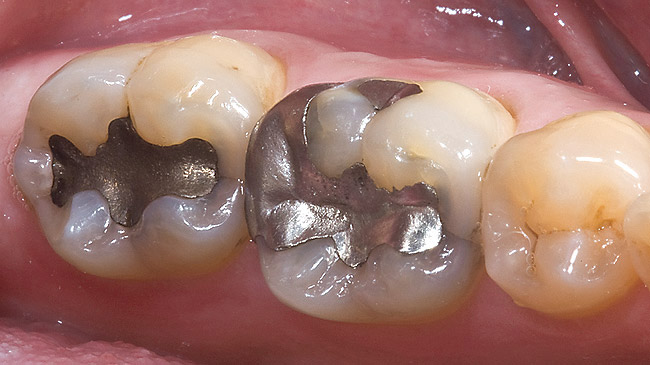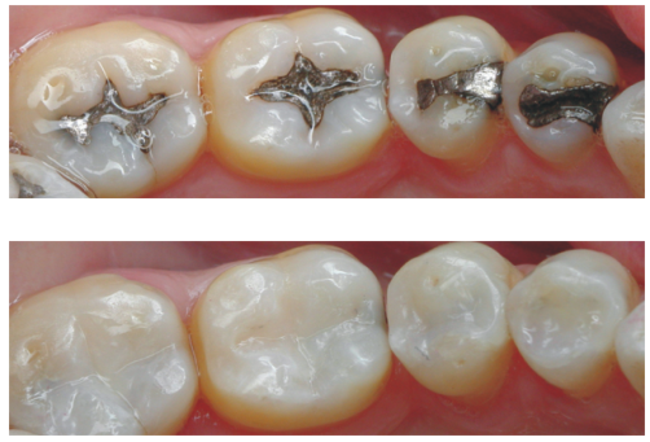Fillings
Fillings vary in complexity and material. Some are direct fillings, placed "directly" in a cavity, although others are indirect, wherein an impression of the tooth is taken and a custom filling is created to fit around it. If your dentist suggests a tooth restoration, knowing what's available can help you make the best choice for your mouth.
Amalgam Fillings
You might think of amalgam fillings for teeth as a classic option. Dentists have been using this type of filling for more than 150 years. As the name suggests, amalgam fillings are made up of a mixture of metals. They typically contain about 50 percent mercury, along with tin, copper, silver or zinc. Compared to other types, amalgam fillings have a few things going for them: They are the least pricey option, and they're also very strong and long-lasting.

Amalgam fillings aren't without drawbacks, though. They're silver in color to start and tend to become darker with time, meaning they are a fairly conspicuous item when you open your mouth. And although the FDA has determined that the level of mercury in the filling is safe for people over the age of six, you might prefer not to have a filling made from this material.
Composite Fillings
If you're embarrassed about your smile because of decay or dark fillings or you just want more natural looking teeth; you may be a good candidate for composite resins. Until recently, dentists only had available the silver amalgams to fill cavities. Recent innovations now allow us to replace these old fillings with composite that are more natural looking.
A composite tooth filling, typically made of powdered glass and acrylic resin, offers a few advantages over an amalgam filling. For one, the filling can be shaded to match the color of a person's existing teeth, making it much less visible. As more people want natural-looking smiles, composite fillings have become increasingly popular.
It's perfect as a small filling, and best suited for teeth that experience a moderate amount of pressure when chewing, compared to teeth that handle the bulk of your chewing action.
Composites can be "bonded" or adhesively held in place, therefore less tooth structure is removed, allowing the dentist to make a more conservative repair to the tooth. This may result in a smaller filling than that of an amalgam. It generally takes longer to place a composite filling than what is required for an amalgam filling. Composite fillings require a cavity that can be kept clean and dry during filling and they are subject to stain and discoloration over time. Composite resins can restore teeth to an attractive, healthy state.
Porcelain Fillings
They are a form of indirect filling, usually require more than one visit to the dentist and tend to be pricey. They look like actual teeth and can help you maintain a natural appearance. These fillings are preferred generally for large cavities and higher esthetic results.

Resin or Glass Ionomer Fillings
Kids get cavities, too, and need to have those cavities filled just like their parents - even if they're on the baby teeth. Resin or glass ionomer fillings are often used on the primary teeth or to fill in small areas of decay, as they tend to be very delicate and take considerable wear and tear. When used on a permanent tooth, this type of filling is usually placed in a spot that isn't subject to extreme pressure or chewing action.








